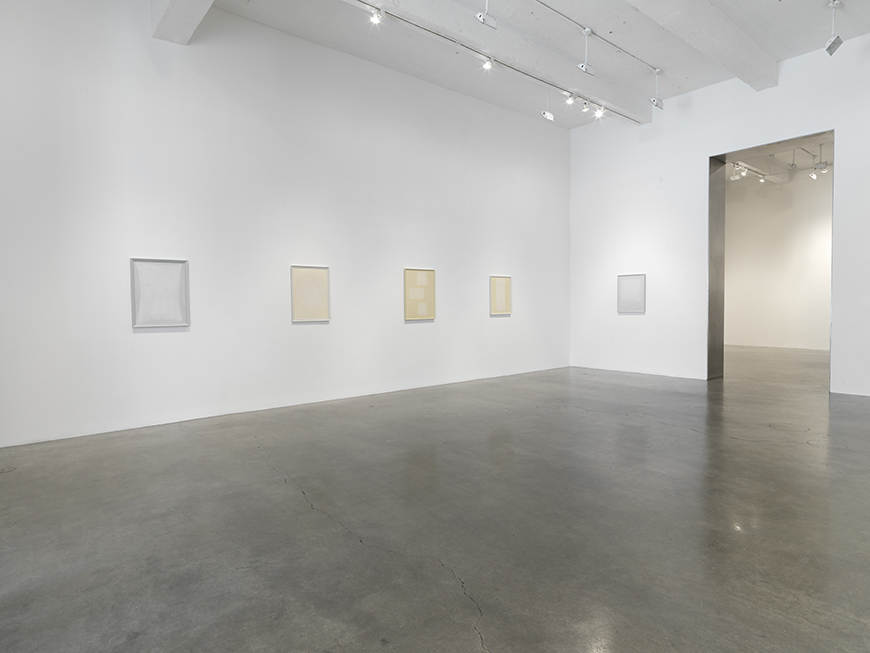
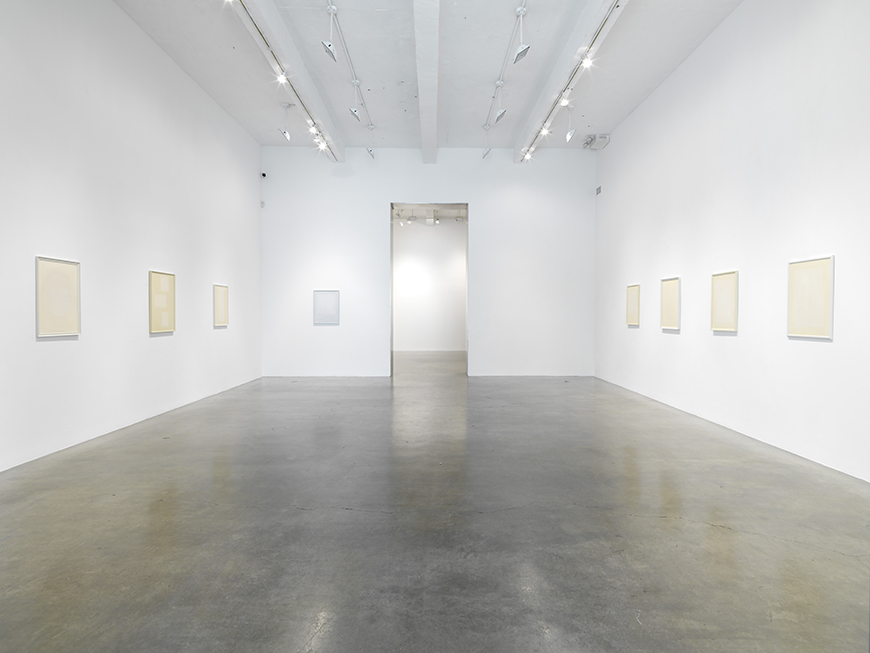
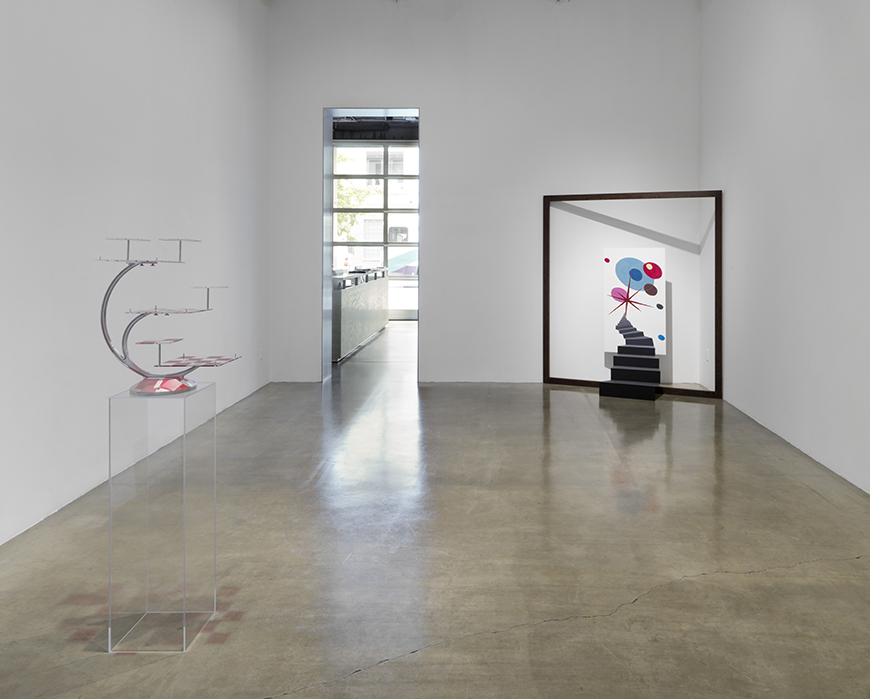
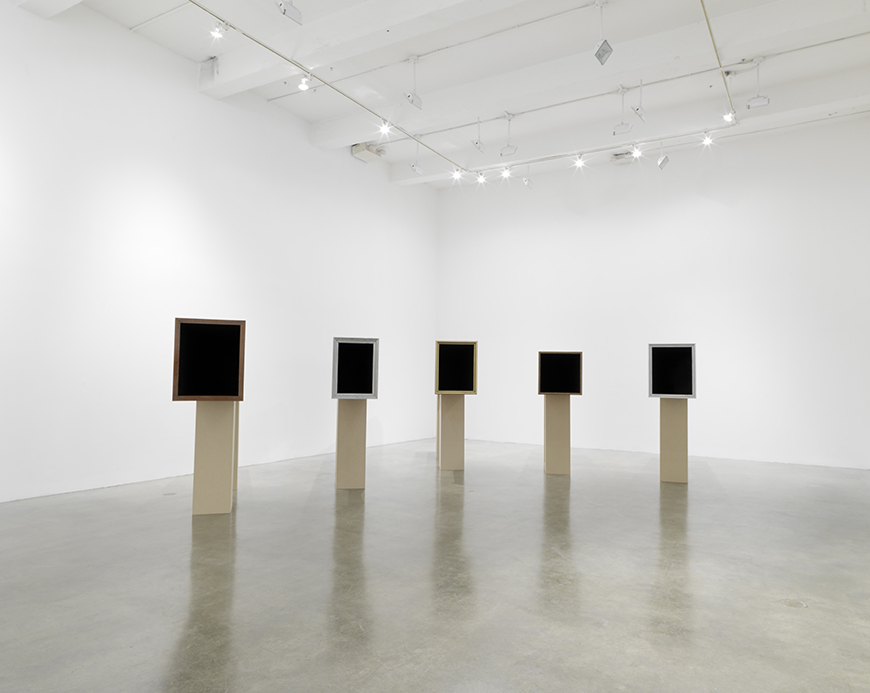
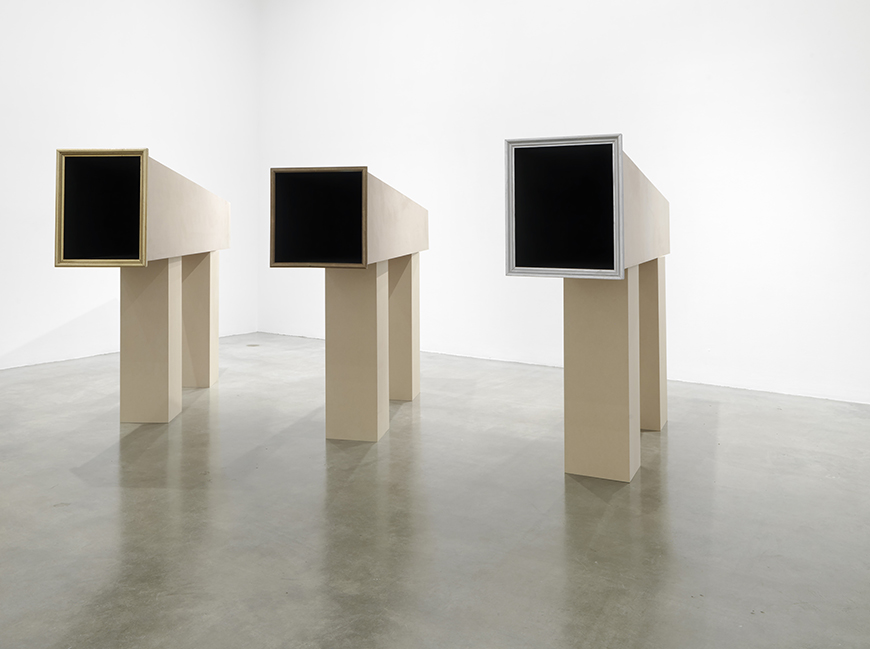
ON TIME
by Andy Hope 1930
The show is a continuation of the Phantom Gallery Shows from 2008 in Los Angeles and Zurich, documented in the book Phantom Gallery (Hauser&Wirth/Steidl, 2009)
Room 1
This room establishes a direct link to the Phantom Gallery and shows that the subject and the stuff/material of the phantoms is still in motion and developing. The exhibits are paintings and signs, taken from the index of the phantom gallery book: signs, that indicate their own vanishing and pictures as objects, that have been taken away – no neither/nor, but difficult to situate precicely. Maybe you want to know, what they indicate exactly, but they remain in a very concrete or tangible way something that cannot be seen anymore, something that was behind and is now in front.
Room 2
The second room presents the „time tubes“; they are a kind of sculptural version of the phantoms, but they also refer to the „doom brigade“, exhibited in the same room three years ago (and to the illustrations in the book „only gods could survive“: the black on the windows of farm houses).
The media of sculpture serves as a surface, that allows to show the dimension of time in the exhibition space. The classical-modern black is confronted with a superrealistic untouchable element, the ground zero of reflection, which has been – in the 20th century – a disastrous and productive knot of unsolvable contradictions and over the time became an almost kitschy sign of honorability (success that doesn’t want to be success) and still is there as a piece of art. So here the unattainable is seen with a frame and a „behind“: a massiv prolongation, that doesnt really „fit“ to what it carrys. we could also say, that the „container“ can’t be seen in what is his open frontside or that the massiv sculptural volume remains an inappropiate supplement to what is his front, the picture. so actually this „supplement“ is blurred by the framed picture, and it at the same time is a destructive threat to it.
…to cut a long story short: we all know that we can’t see a black hole.
Room 3
Now, in the 3rd room – a 3 dimensional picture and a “ready mady” chess-game – the 2 other rooms find their exit/continuation/next move:
As I prefer, I like to turn it into the narrative or concrete which means: again not into what has been the classical/radical/consequence, any kind of superfical honorable end of art, but more into what still is open to explore, by all means possible, which means in art: pictorial or even banal stuff, no „picture-picture“ but a „window“ (and then it became a „black widow“).
The background of the whole show, the Malevich-Duchamp-field, here comes to a picture to step into and a game to play with.
In the end black produces 3-dimensional colours, and the “ready-made” chess game demands thinking in 3 to 4 dimension, which is (as we know) the “game in” the turning bicycle wheel, the blurry presence of another space: the very concrete colours/things and blacks of the field, I am dealing with.
Otherwise you wouldn’t understand, neither the Malevich late farmers, nor the Duchamp „box in a valise“ (this movable toy-case), nor – if you take my way – the moment of a picture (my frames) in time.